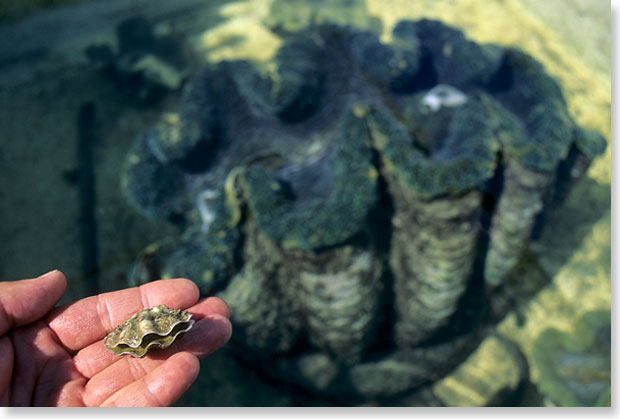For 12 hours,
fertilized Giant Clam eggs float in the
sea
until eventually a larva hatches. It
then starts producing
a chalk shell, and by age two days
measures 0.0063 inches.
Soon it develops a 'foot' used to move
on the bottom,
though it can also swim to search for
appropriate habitat.
At roughly one
week, the clam spat settles on the reef.
The larva does not yet have symbiotic
algae, so it depends
completely on plankton. Eventually the
mantle captures
free-floating zooxanthellae while
filtering food.
Unlike this
farm hatched one year old ('dad' in the
tank),
many 'wild' small clams die at this
stage. Laboratory-reared
Giant Tridacna Clams can grow 4.5 inches
per year.

